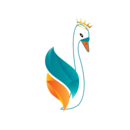Which Is More Reliable? ICP-OES vs AAS for Chromium and Lead Analysis in Heavy Metal Monitoring
Abstract
Purpose of the study: This study aims to compare the accuracy and reliability of Inductively Coupled Plasma Optical Emission Spectroscopy and Atomic Absorption Spectrometry in analyzing heavy metal contents specifically lead (Pb) and chromium (Cr) in textile wastewater.
Methodology: The study employed a descriptive experimental method using water samples collected from a river suspected of contamination by textile waste. Tools used include AAS (APHA.322 B-2005), ICP OES (IK/LEL-ITS/ICP), and various laboratory glassware. Sample preparation followed SNI 6989.57:2008, and analytical validation included precision, accuracy, linearity, LOD, and LOQ testing.
Main Findings: Both methods showed acceptable validation values, with linear regression coefficients (R²) above 0.995. ICP OES and AAS demonstrated good precision (%RSD ≤ 2%) and recovery rates between 93%–105%. However, significant differences were found between the two instruments (p = 0.012). Pb and Cr concentrations at discharge points exceeded regulatory limits.
Novelty/Originality of this study: This study presents a comparative evaluation of ICP OES and AAS in the context of environmental monitoring, providing essential insights into their suitability for detecting heavy metals in complex wastewater matrices.
References
C. Zou et al., “Industrial status, technological progress, challenges, and prospects of hydrogen energy,” Nat. Gas Ind. B, vol. 9, no. 5, pp. 427–447, 2022, doi: 10.1016/j.ngib.2022.04.006.
R. Huang, P. Yan, and X. Yang, “Knowledge map visualization of technology hotspots and development trends in China’s textile manufacturing industry,” IET Collab. Intell. Manuf., vol. 3, no. 3, pp. 243–251, 2021, doi: 10.1049/cim2.12024.
N. Crafts, “Artificial intelligence as a general-purpose technology: An historical perspective,” Oxford Rev. Econ. Policy, vol. 37, no. 3, pp. 521–536, 2021, doi: 10.1093/oxrep/grab012.
A. Siddiqua, J. N. Hahladakis, and W. A. K. A. Al-Attiya, “An overview of the environmental pollution and health effects associated with waste landfilling and open dumping,” Environ. Sci. Pollut. Res., vol. 29, no. 39, pp. 58514–58536, 2022, doi: 10.1007/s11356-022-21578-z.
S. A. Razzak et al., “A comprehensive review on conventional and biological-driven heavy metals removal from industrial wastewater,” Environ. Adv., vol. 7, no. December 2021, p. 100168, 2022, doi: 10.1016/j.envadv.2022.100168.
Z. Kilic, “Water Pollution: Causes, Negative Effects and Prevention Methods,” İstanbul Sabahattin Zaim Üniversitesi Fen Bilim. Enstitüsü Derg., vol. 3, no. 2, pp. 129–132, 2021, doi: 10.47769/izufbed.862679.
K. Farhana, K. Kadirgama, A. S. F. Mahamude, and M. T. Mica, “Energy consumption, environmental impact, and implementation of renewable energy resources in global textile industries: an overview towards circularity and sustainability,” Mater. Circ. Econ., vol. 4, no. 1, pp. 1–17, 2022, doi: 10.1007/s42824-022-00059-1.
J. Liu et al., “Microfiber pollution: an ongoing major environmental issue related to the sustainable development of textile and clothing industry,” Environ. Dev. Sustain., vol. 23, no. 8, pp. 11240–11256, 2021, doi: 10.1007/s10668-020-01173-3.
I. Wojnowska-Baryła, K. Bernat, and M. Zaborowska, “Strategies of Recovery and Organic Recycling Used in Textile Waste Management,” Int. J. Environ. Res. Public Health, vol. 19, no. 10, pp. 1–18, 2022, doi: 10.3390/ijerph19105859.
T. Adane, A. T. Adugna, and E. Alemayehu, “Textile Industry Effluent Treatment Techniques,” J. Chem., vol. 2021, pp. 1–14, 2021, doi: 10.1155/2021/5314404.
I. Wojnowska-Baryła, K. Bernat, M. Zaborowska, and D. Kulikowska, “The Growing Problem of Textile Waste Generation—The Current State of Textile Waste Management,” Energies, vol. 17, no. 7, pp. 1–12, 2024, doi: 10.3390/en17071528.
S. Velusamy, A. Roy, S. Sundaram, and T. Kumar Mallick, “A Review on Heavy Metal Ions and Containing Dyes Removal Through Graphene Oxide-Based Adsorption Strategies for Textile Wastewater Treatment,” Chem. Rec., vol. 21, no. 7, pp. 1570–1610, 2021, doi: 10.1002/tcr.202000153.
P. Dutta, M. Razaya Rabbi, M. A. Sufian, and S. Mahjebin, “Effects of textile dyeing effluent on the environment and its treatment: A review,” Eng. Appl. Sci. Lett., vol. 5, no. 1, pp. 1–17, 2022, doi: 10.30538/psrp-easl2022.0080.
M. Qasim et al., “Biogenic Nanoparticles at the Forefront: Transforming Industrial Wastewater Treatment with TiO2 and Graphene,” Sch. J. Agric. Vet. Sci., vol. 11, no. 05, pp. 56–76, 2024, doi: 10.36347/sjavs.2024.v11i05.002.
M. M. Uddin and J. S. Cassim, Mohamed Zakeel, MohamedZavahir, “Heavy Metal Accumulation in Rice and Aquatic Plants Used as,” Toxics, vol. 9, no. 360, pp. 1–19, 2021.
P. Garai, P. Banerjee, P. Mondal, and N. C. Saha, “Effect of Heavy Metals on Fishes: Toxicity and Bioaccumulation,” J. Clin. Toxicol., vol. 11, no. August, pp. 1–11, 2021.
S. Ghosh, J. K. Sinha, S. Ghosh, K. Vashisth, S. Han, and R. Bhaskar, “Microplastics as an Emerging Threat to the Global Environment and Human Health,” Sustainability, vol. 15, pp. 1–17, 2023.
E. M. Albou, M. Abdellaoui, A. Abdaoui, and A. A. Boughrous, “Agricultural Practices and their Impact on Aquatic Ecosystems – A Mini-Review,” Ecol. Eng. Environ. Technol., vol. 25, no. 1, pp. 321–331, 2024.
D. Bănăduc et al., “Multi-Interacting Natural and Anthropogenic Stressors on Freshwater Ecosystems : Their Current Status and Future Prospects for 21st Century,” Water (Switzerland), vol. 16, pp. 1–46, 2024, doi: 10.3390/w16111483.
N. Munir et al., “Heavy metal contamination of natural foods is a serious health issue: A review,” 2022. doi: 10.3390/su14010161.
P. Zhang et al., “Water Quality Degradation Due to Heavy Metal Contamination: Health Impacts and Eco-Friendly Approaches for Heavy Metal Remediation,” 2023. doi: 10.3390/toxics11100828.
V. Singh et al., “Toxic heavy metal ions contamination in water and their sustainable reduction by eco-friendly methods: isotherms, thermodynamics and kinetics study,” Sci. Rep., vol. 14, no. 1, pp. 1–13, 2024, doi: 10.1038/s41598-024-58061-3.
S. F. AbuQamar et al., “Ecological impacts and management strategies of pesticide pollution on aquatic life and human beings,” Mar. Pollut. Bull., vol. 206, p. 116613, 2024.
B. K. CHAKRABORTY, “Effect of pesticide and heavy metal toxicants on fish and human health,” J. Crop Weed, vol. 19, no. 1, pp. 110–118, 2023, doi: 10.22271/09746315.2023.v19.i1.1669.
N. Akhtar, M. I. Syakir Ishak, S. A. Bhawani, and K. Umar, “Various natural and anthropogenic factors responsible for water quality degradation: A review,” Water (Switzerland), vol. 13, no. 19, pp. 1–35, 2021, doi: 10.3390/w13192660.
H. Sohrabi et al., “Recent advances on portable sensing and biosensing assays applied for detection of main chemical and biological pollutant agents in water samples: A critical review,” TrAC - Trends Anal. Chem., vol. 143, p. 116344, 2021, doi: 10.1016/j.trac.2021.116344.
F. Naseem et al., “Role of chemical composition of drinking water in human health of the community,” J. King Saud Univ. - Sci., vol. 34, no. 7, p. 102232, 2022, doi: 10.1016/j.jksus.2022.102232.
A. B. Mohamad and N. Ismail, “Environmental Preservation and Water Pollution from the Islamic Perspective,” Samarah J. Huk. Kel. dan Huk. Islam, vol. 7, no. 2, pp. 997–1015, 2023, doi: 10.22373/sjhk.v7i2.16019.
S. Y. Imran, Apripari, M. H. Muhtar, J. Puluhulawa, J. A. Kaluku, and L. W. Badu, “Existentialism and environmental destruction: Should polluters face criminal punishment or an existential crisis?,” in E3S Web of Conferences, 2024, pp. 1–18. doi: 10.1051/e3sconf/202450606001.
D. Nafisah, D. L. Setyowati, E. Banowati, A. S. Priyanto, and N. Hamid, “The Integration of Environmental Pollution Materials in Social Studies Learning in School for Anticipation of Climate Change,” Pegem Egit. ve Ogr. Derg., vol. 12, no. 4, pp. 47–60, 2022, doi: 10.47750/pegegog.12.04.06.
M. Hendawi, G. Al Murshidi, M. F. Hadi, M. Huda, and T. Lovat, “The Development of Islamic Education Curriculum from the Quranic Perspective,” Ar-Fahruddin J. Islam. Educ., vol. 1, no. 2, pp. 93–123, 2024.
H. Lestari, M. Ali, W. Sopandi, and A. R. Wulan, “Infusion of Environment Dimension of ESD into Science Learning Through the RADEC Learning Model in Elementary Schools,” J. Penelit. Pendidik. IPA, vol. 7, no. SpecialIssue, pp. 205–212, 2021, doi: 10.29303/jppipa.v7ispecialissue.817.
S. Dytłow and B. Górka-Kostrubiec, “Concentration of heavy metals in street dust: an implication of using different geochemical background data in estimating the level of heavy metal pollution,” Environ. Geochem. Health, vol. 43, no. 1, pp. 521–535, 2021, doi: 10.1007/s10653-020-00726-9.
M. Cetin, A. M. O. Aljama, O. B. M. Alrabiti, F. Adiguzel, H. Sevik, and I. Zeren Cetin, “Determination and Mapping of Regional Change of Pb and Cr Pollution in Ankara City Center,” Water Air Soil Pollut, vol. 233, no. 5, pp. 1–10, 2022, doi: 10.1007/s11270-022-05638-1.
V. Kumar, S. K. Dwivedi, and S. Oh, “A critical review on lead removal from industrial wastewater: Recent advances and future outlook,” J. Water Process Eng., vol. 45, p. 102518, 2022.
L. El Hosry, N. Sok, R. Richa, L. Al Mashtoub, P. Cayot, and E. Bou-Maroun, “Sample Preparation and Analytical Techniques in the Determination of Trace Elements in Food: A Review,” Foods, vol. 12, no. 4, pp. 1–29, 2023, doi: 10.3390/foods12040895.
D. Wu, Y. Hu, H. Cheng, and X. Ye, “Detection Techniques for Lead Ions in Water: A Review,” Molecules, vol. 28, no. 8, pp. 1–15, 2023, doi: 10.3390/molecules28083601.
S. R. Khan, B. Sharma, P. A. Chawla, and R. Bhatia, “Inductively Coupled Plasma Optical Emission Spectrometry (ICP-OES): a Powerful Analytical Technique for Elemental Analysis,” Food Anal. Methods, vol. 15, no. 3, pp. 666–688, 2022, doi: 10.1007/s12161-021-02148-4.
C. Douvris, T. Vaughan, D. Bussan, G. Bartzas, and R. Thomas, “How ICP-OES changed the face of trace element analysis: Review of the global application landscape,” Sci. Total Environ., vol. 905, no. September, p. 167242, 2023, doi: 10.1016/j.scitotenv.2023.167242.
A. G. Hall, J. C. King, and C. M. McDonald, “Comparison of Serum, Plasma, and Liver Zinc Measurements by AAS, ICP-OES, and ICP-MS in Diverse Laboratory Settings,” Biol. Trace Elem. Res., vol. 200, no. 6, pp. 2606–2613, 2022, doi: 10.1007/s12011-021-02883-z.
G. K. Deshwal, L. G. Gómez-Mascaraque, M. Fenelon, and T. Huppertz, “Determination of Minerals in Soft and Hard Cheese Varieties by ICP-OES: A Comparison of Digestion Methods,” Molecules, vol. 28, no. 10, pp. 1–12, 2023, doi: 10.3390/molecules28103988.
M. M. Rahman, M. I. Tabash, A. Salamzadeh, S. Abduli, and M. S. Rahaman, “Sampling Techniques (Probability) for Quantitative Social Science Researchers: A Conceptual Guidelines with Examples,” SEEU Rev., vol. 17, no. 1, pp. 42–51, 2022, doi: 10.2478/seeur-2022-0023.
H. Taherdoost, “What are Different Research Approaches? Comprehensive Review of Qualitative, Quantitative, and Mixed Method Research, Their Applications, Types, and Limitations,” J. Manag. Sci. Eng. Res., vol. 5, no. 1, pp. 53–63, 2022, doi: 10.30564/jmser.v5i1.4538.
Y. Xie, S. Lyu, Y. Zhang, and C. Cai, “Adsorption and Degradation of Volatile Organic Compounds by Metal–Organic Frameworks (MOFs): A Review,” Materials (Basel)., vol. 15, pp. 1–28, 2022, doi: /doi.org/10.3390/ma15217727.
M. Zhou, B. Li, J. Li, and Z. Xu, “Pyrometallurgical technology in the recycling of a spent lithium ion battery: evolution and the challenge,” ACS ES&T Eng., vol. 1, no. 10, pp. 1369–1382, 2021.
Copyright (c) 2025 Seerwan Fadhil Shawkat, Shimaa A Ahmed, Sumaira Nadeem

This work is licensed under a Creative Commons Attribution 4.0 International License.
Authors who publish with this journal agree to the following terms:
- Authors retain copyright and acknowledge that the Journal of Chemical Learning Innovation is the first publisher licensed under a Creative Commons Attribution 4.0 International License.
- Authors are able to enter into separate, additional contractual arrangements for the non-exclusive distribution of the journal's published version of the work (e.g., post it to an institutional repository or publish it in a book), with an acknowledgment of its initial publication in this journal.
- Authors are permitted and encouraged to post their work online (e.g., in institutional repositories or on their website) prior to and during the submission process, as it can lead to productive exchanges and earlier and greater citation of published work.





.png)
.png)










